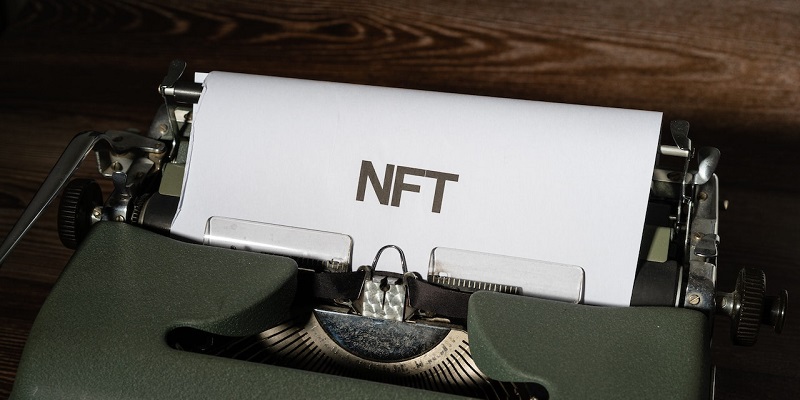The use of blockchain technology has given rise to various innovations in the world of philanthropy. One of the most notable is the trend of using non-fungible tokens (NFTs) to create unique pieces of digital art or collectibles that can serve as a fundraising tool for charitable causes. However, NFTs have greater potential beyond being just digital assets. In this article, we explore how NFTs can become guardians of truth, keepers of trust, and enforcers of change in the philanthropic sector.
NFTs as guardians of truth, keepers of trust, and enforcers of change
NFTs offer a new standard of authenticity that can be utilized to address issues of transparency, accountability, and trust in philanthropic organizations. By creating a transparent and tamper-proof ledger of transactions, NFTs can help provide a clear picture of how donations are being utilized. Furthermore, NFTs can serve as proof of impact and accountability, thereby helping to enforce change.”
Addressing transparency issues with NFTs
In recent years, the philanthropic sector has faced concerns around transparency, with some organizations facing allegations of misusing funds. NFTs can address these issues by offering a transparent and tamper-proof ledger of transactions. The smart contracts, a key feature of blockchain technology, can be utilized to automate and enforce transparency in charitable donations. This level of transparency helps to build trust and confidence among donors and ensures that their contributions reach the intended beneficiaries.
Verifying Charitable Donations with NFTs
Donors can easily verify how their funds are being deployed, ensuring that they reach the intended beneficiaries. Every donation can be traced and verified, creating an immutable record of how contributions are being utilized. With NFTs, there is no need for intermediaries, and the funds can go directly to the beneficiaries, making the process more efficient and reliable.
NFTs as Sacred Symbols of Positive Impact
A unique aspect of NFTs is that they can serve as symbols of positive impact. Imagine an NFT as a sacred symbol of a school being built, a well of pure water being dug, or healthcare being provided. These symbols can be traded, owned, and displayed for all to see, creating a sense of ownership and pride. The symbolism behind NFTs can also help organizations create emotional connections with donors and beneficiaries, leading to stronger relationships.
Novel and Exciting Engagement Opportunities with NFTs
NFTs provide an opportunity to engage donors in a novel and exciting way. Beyond the usual appeal of charitable causes, NFTs offer a new way for donors to make an impact. For example, a nonprofit organization can create a series of NFTs that represent a particular project or program. Donors can purchase these NFTs, with their proceeds going towards that project or program. The ownership of these NFTs also comes with exclusive rights and benefits, such as special donor recognition or access to events.
Collaboration and trust are facilitated through transparency with NFTs. The use of NFTs can help prevent cases of fraud, misuse of funds, or corruption, leading to a more efficient and reliable system between philanthropic organizations, donors, and beneficiaries. This creates a cycle in which donors are more willing to give because they feel that their funds are being utilized effectively, leading to more impactful projects and programs.
Putting an end to the trust deficit in philanthropy with blockchain technology
The use of blockchain technology, and NFTs in particular, can put an end to the trust deficit that has plagued the sector for far too long. Blockchain offers a secure platform that can help philanthropic organizations create a new standard of transparency and accountability, which can help restore trust among donors and beneficiaries. This would lead to more effective and impactful projects.
Tracing and verifying donations with NFTs
The use of NFTs ensures that every donation can be traced and verified, creating an immutable record of how contributions are being utilized. This creates accountability and transparency that can help build and maintain trust among stakeholders. Philanthropic organizations can use NFTs to create public, tamper-proof records of their activities, helping to demonstrate their impact and value.
Building trust and confidence through accountability with NFTs
The transparency created by NFTs builds trust and confidence among donors, paving the way for a new era of giving. With NFTs, charitable organizations can prove that their efforts are productive, leading to more donations and a positive impact on the beneficiaries. This increased accountability and transparency can also help improve the overall perception of the philanthropic sector, leading to a higher trust level among all stakeholders.
In conclusion, the use of NFTs in philanthropy has the potential to revolutionize the sector by creating a new standard of authenticity, transparency, and accountability. By serving as guardians of truth, keepers of trust, and enforcers of change, NFTs can transform the way philanthropic organizations operate. The benefits of NFTs are clear: increased transparency, improved efficiency, and more value for donors, beneficiaries, and society as a whole. As NFTs gain popularity, we can expect a new era of giving and a brighter future for philanthropy.

